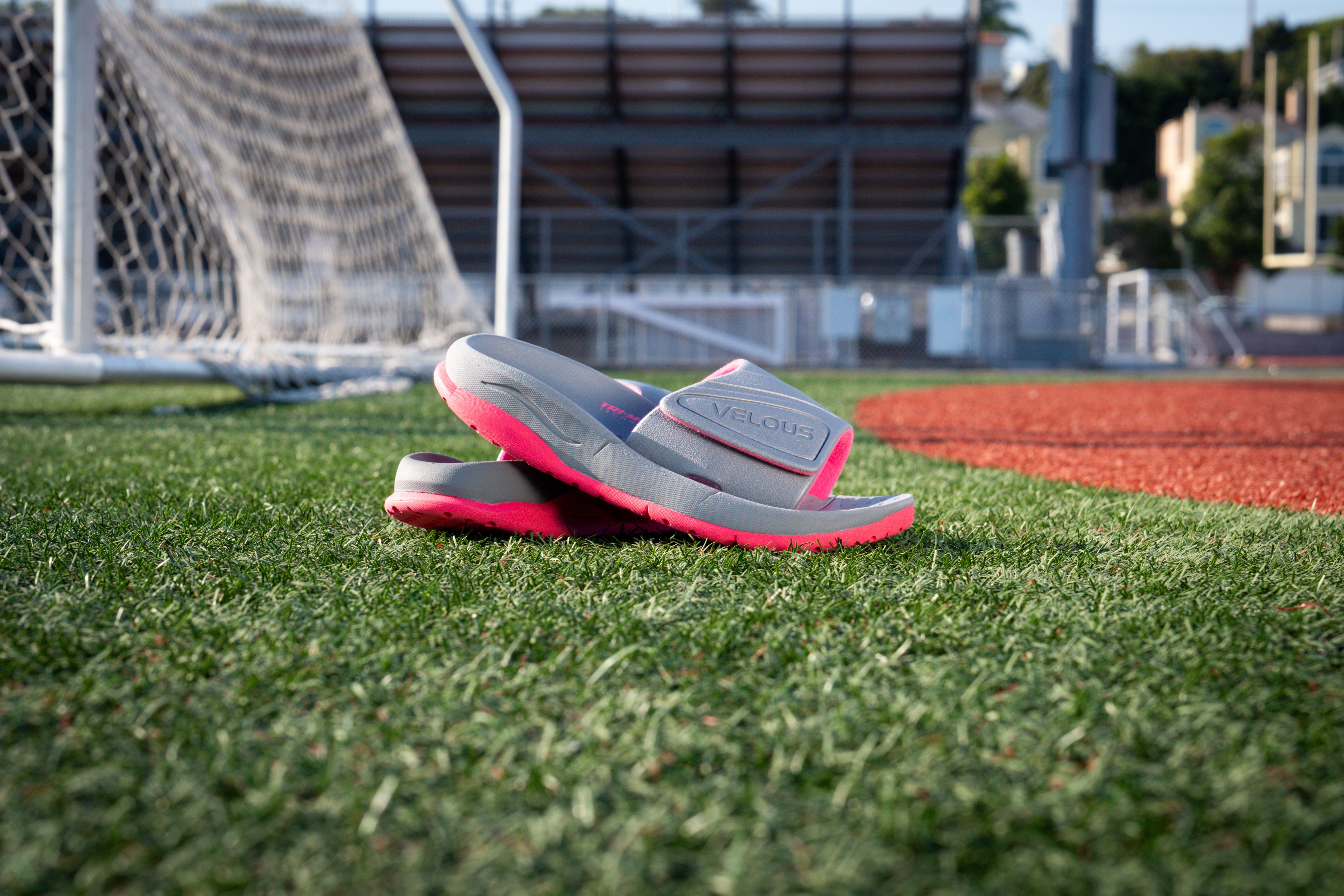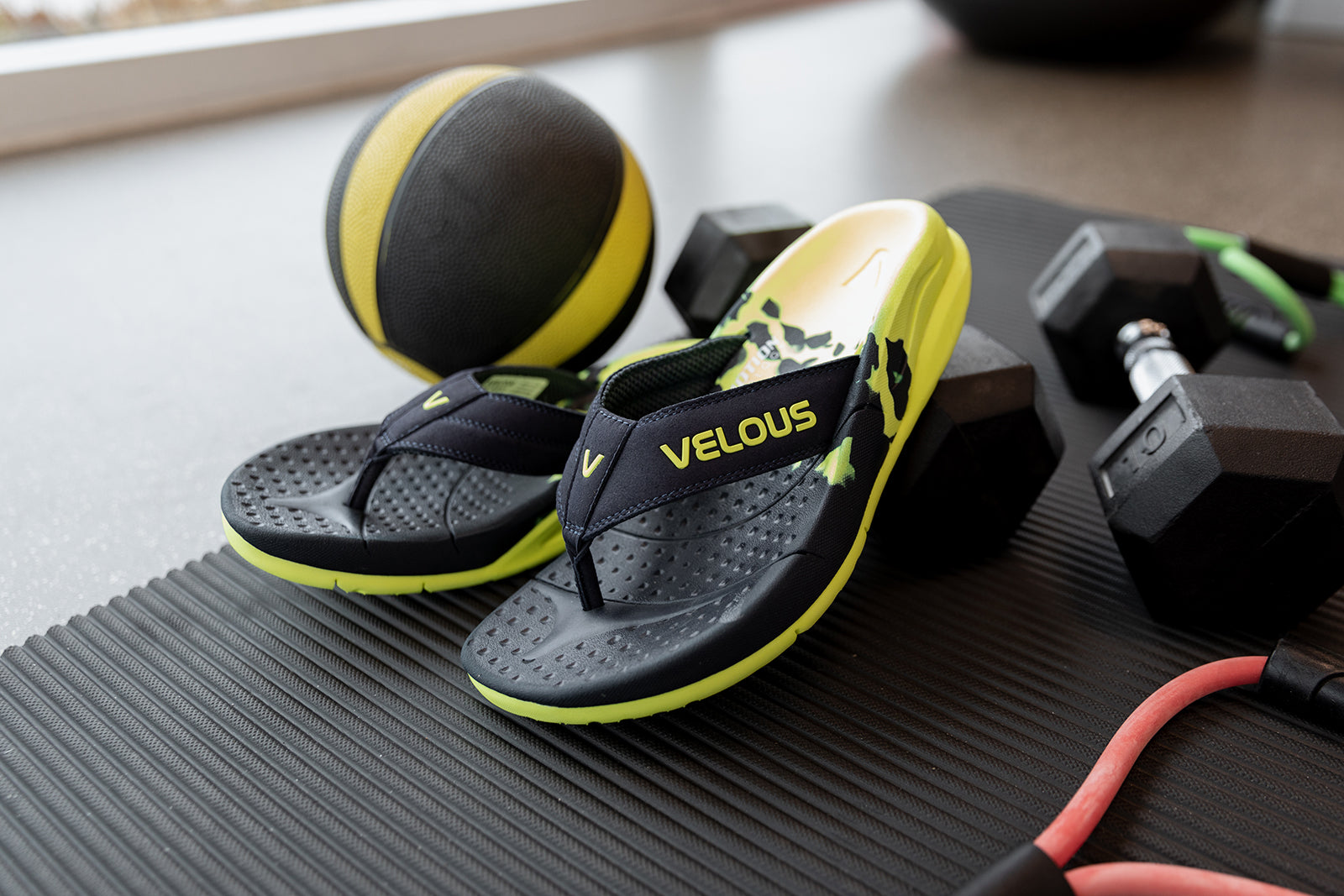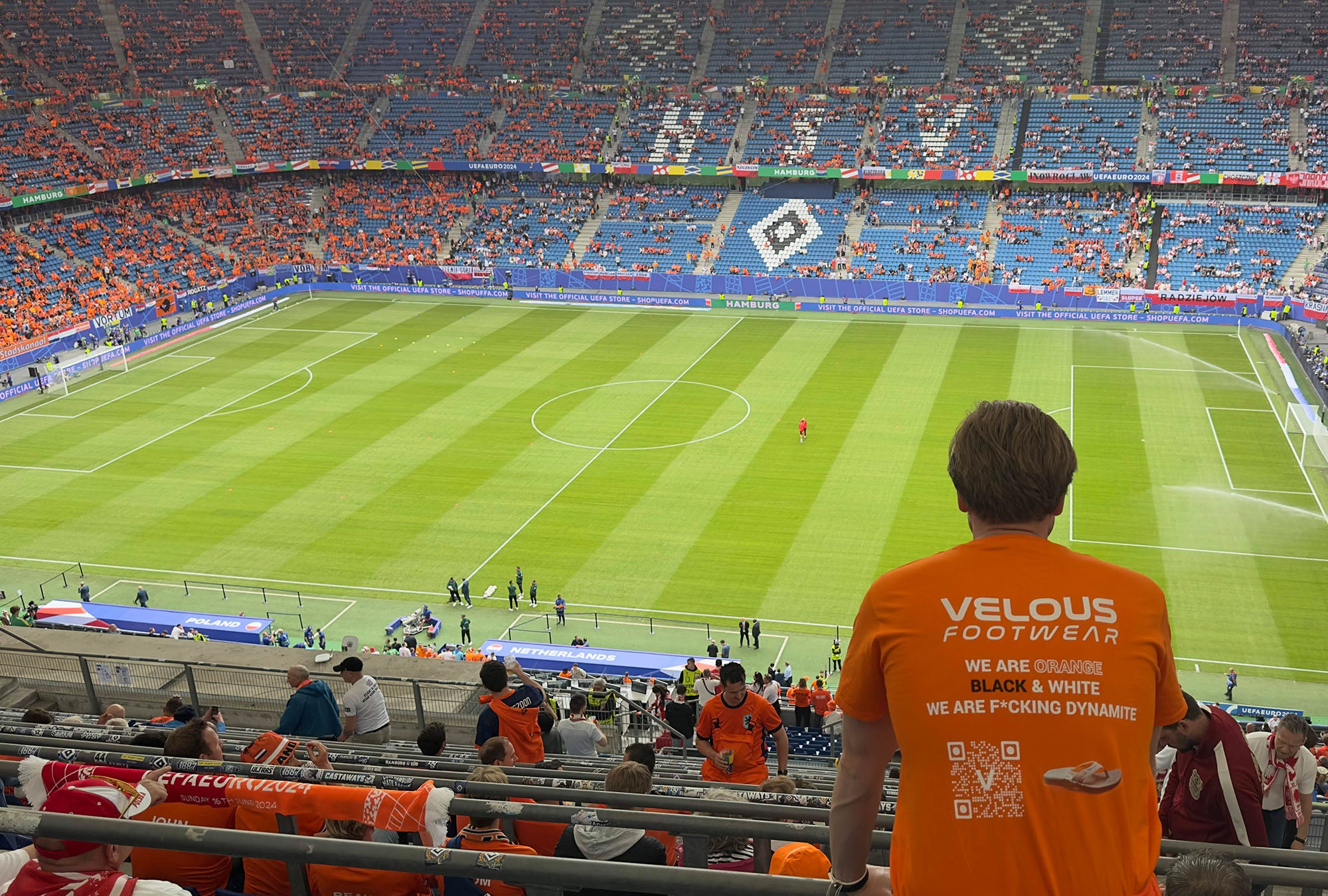In het volgende interview spraken we met Dr. Mineo over geschikt herstelschoeisel, hoe je voet- en enkelblessures kunt voorkomen en zijn favoriete herstelschoenen van VELOUS.

Dr. Tim Mineo: Herstel is de sleutel tot het opbouwen van conditie. Om op ons limiet te trainen, moeten we het herstel in alle aspecten van onze training maximaliseren. Ik heb me specifiek gericht op voedingsherstel, mindfulness, spierondersteuning en bewegingsbereik van gewrichten en spieren. Herstelschoenen hebben de voet laten profiteren van herstel.
Persoonlijk heb ik het buitengewoon nuttig gevonden om direct na het fietsen in stijve fietsschoenen mijn herstelsandalen aan te trekken. Ik heb de voordelen van herstelschoenen opgemerkt tijdens de training de volgende dag.
VF: WELKE VEELVOORKOMENDE VOETBLESSURE ZIE JE ONDER ATLETEN IN JE PRAKTIJK DIE KAN WORDEN VOORKOMEN DOOR GOEDE HERSTELSCHOENEN TE DRAGEN?
Dr. Tim Mineo: De meest voorkomende voetblessures die ik in mijn praktijk zie, worden veroorzaakt door overbelasting en een gebrek aan goed herstel. Dit zijn meestal verwondingen aan het zachte weefsel van de spieren en pezen die de voet en onderste ledematen helpen controleren. Patiënten kunnen ook klagen over krampen en spiervermoeidheid bij dit soort voetverwondingen.
VF: WELKE SOORTEN VEELVOORKOMENDE VOETPROBLEMEN ZIET U BIJ UW PATIËNTEN IN UW PRAKTIJK?
Dr. Tim Mineo: Ik behandel veel voetverwondingen die worden veroorzaakt door ongeschikt schoeisel voor de gebruiker of de activiteit. Ik zie bijvoorbeeld patiënten met hoge bogen die bewegingsgestuurde schoenen gebruiken — ook wel stabiliteitsschoenen genoemd — die biomechanische problemen veroorzaken. Ook heb ik patiënten met zeer flexibele geproneerde voeten zien lijden aan overbelasting omdat ze geen schoenen dragen die de juiste ondersteuning bieden.
VF: HEEFT HET VERZORGEN VAN UW VOETEN INVLOED OP DE REST VAN HET LICHAAM?
Dr. Tim Mineo: Ja, het verzorgen van uw voeten, vooral tijdens het herstel, zorgt voor meer mindfulness en herstel van het hele lichaam na een activiteit.
VF: WELKE EIGENSCHAPPEN MOET EEN GOEDE HERSTELSCHOEN HEBBEN DIE EEN HARDLOOPSCHOEN NIET HEEFT? ZIJN HARDLOOP- EN HERSTELSCHOENEN ECHT ZO VERSCHILLEND?
Dr. Tim Mineo: Een hardloopschoen is ontworpen om de voet te ondersteunen tijdens dynamische functies en de buitensporige krachten te weerstaan die door de voet worden uitgeoefend. Tijdens het hardlopen kunnen we een kracht uitoefenen die 5 tot 7 keer ons lichaamsgewicht op één voet uitoefent. Hardloopschoenen kunnen deze krachten minimaliseren, torsieondersteuning bieden en de prestaties maximaliseren. Herstelschoenen verschillen enorm omdat ze maximale flexibiliteit, bewegingsbereik en demping bieden, terwijl ze enige controle over de achtervoet behouden.
VF: WELKE POPULAIRE "MISVATTING" HEBT U GEHOORD OVER HERSTELSCHOENEN?
Dr. Tim Mineo: Te veel schuim en te weinig structurele ondersteuning gebruiken bij het ontwerp van een herstelschoen is een populaire misvatting onder sommige schoenfabrikanten. Hoewel het gebruik van meer schuim extra comfort kan bieden, wat het herstelproces kan bevorderen, is er ook structurele ondersteuning nodig. De voet is een zeer complexe structuur en vereist veel structurele ondersteuning om de spieren en gewrichten op de juiste manier uit te lijnen voor het meest effectieve herstel.
VF: WAT ZIJN DE BELANGRIJKSTE KENMERKEN WAAR JE OP MOET LETTEN BIJ HET WINKELEN VOOR ACTIEVE HERSTELSCHOENEN?
Dr. Tim Mineo: Bij het winkelen voor herstelschoenen raad ik patiënten aan om te zoeken naar herstelschoenen die enige bewegingscontrole van de achtervoet bieden. Meer specifiek raad ik herstelschoenen aan met een diepere hielkap en boogondersteuning; de laatste kan helpen om de middenvoet te ontspannen. Daarnaast is het goed om een herstelschoen te kiezen die een breder bewegingsbereik biedt voor de verschillende gewrichten in de voet.
VF: WAAROM ZIJN DEZE KENMERKEN BELANGRIJK EN WAT DOEN ZE?
Dr. Tim Mineo: Ik vind de kenmerken in VELOUS-schoeisel precies goed en wat we zoeken in een herstelsandaal of -schoen. VELOUS begrijpt de drie belangrijkste delen van de voet: achtervoet, middenvoet en voorvoet. Ze begrijpen hoe belangrijk het is om de achtervoet te controleren en de voetboog te ondersteunen, zodat de middenvoet goed uitgelijnd is en de gewrichten in een neutralere positie staan. Ik vind het schuimbed ook extreem comfortabel en tegelijkertijd ondersteunend. Ik beschrijf het ontwerp als het omhoog brengen van de vloer naar de voet om de belasting van de gewrichten en spieren te verminderen.
VF: WAT IS JE FAVORIETE VELOUS RECOVERY SHOE, EN WAAROM?
Dr. Tim Mineo: Ik ben een groot fan van de originele VELOUS Pacific Flip; ze zijn al jaren mijn favoriet. Ik ben ook een groot fan van de nieuwe Active Flip met zachte teenband. Mijn routine als ik van mijn fiets stap, is om deze meteen aan te trekken om direct verlichting te krijgen van mijn vermoeide voeten. Ik merk dat ik ze nu gebruik voor mijn dagelijkse flips, zelfs als ik niet train of fiets. Ze zitten echt comfortabel en bieden de ondersteuning die ik nodig heb.
VELOUS FOOTWEAR RECOVERY SHOES
Als u klaar bent om uw herstel te verbeteren, bezoek dan de VELOUS-winkel om meer te weten te komen over herstelschoenen of om te kiezen uit een selectie van hoogwaardige herstelschoenen en sandalen.







